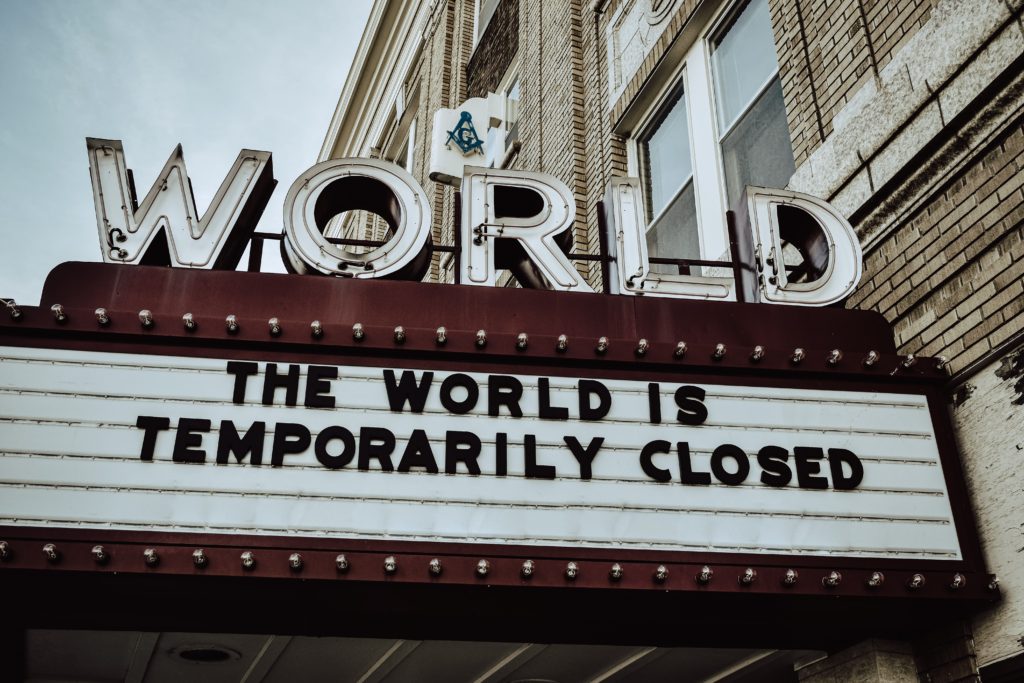Two Restaurants in a Pandemic: A Case Study

Two family-owned restaurants in a state that is on lock down: they are only allowed to sell carry-out and delivery. Statistically, both should be failing, but one isn’t. In fact, one of these restaurants is doing more business than I’ve seen them do in the last year outside of holidays. Why is that?
This article is a case study of two extremely similar restaurants that have had very different outcomes as a result of COVID-19. Before the pandemic hit, both had roughly the same proportion of dine-in, carry-out, and delivery orders, but each restaurant reacted and used their resources differently.
I’ll be keeping these restaurants unnamed as this is my analysis without a full knowledge of their inner-workings. My information comes from my own observations over a year of eating at each place regularly and several conversations with the owners and managers of each restaurant. I am not shaming the restaurant that has been struggling. The goal is to show real-world examples so that others in similar situations can learn and save their own businesses.
To my understanding, rent, staff pay, supply chain, and margins are similar for each restaurant. Both restaurants are in an area with an Asian population of around 30% that has not experienced racism related to COVID-19.
Drowning: Korean Deli
This place is my favorite restaurant, hands down. That’s not to say I don’t love the others in the area, but this place has a special place in my heart. This deli specializes in Korean lunch food, especially kimbap. It’s a tiny, 12 table shop, but the staff always makes you feel at home.
I grab some kimbap to-go at least twice a month. It’s about the same price as the McDonald’s on the end of the block, but you get way more food and it’s a lot more nutritious. Before the pandemic, they had steady business. Tables were always occupied during lunch and dinner, and they handled many pick-up orders for lunch each day.
Since the crisis, this Korean Deli has struggled to remain open. I went to the shop in mid-March and asked if they were doing ok while I picked up my order. The staff teared up and said, “no.” I wanted to cry with them. My husband and I resolved to eat kimbap as much as we could to try to keep them afloat.
In late March, we stopped in for our kimbap and were told that the shop would be closing the next day. Our state’s governor has just forced a shutdown of all non-essential businesses, and while this excluded the deli, they simply couldn’t figure out how to go on with such a huge dip in orders. Luckily, they were able to reopen recently and are operating under heavily reduced hours and only two staff members are working now.
Riding the Wave: Thai Restaurant
This Thai Restaurant is much newer than the Korean Deli, and marginally more expensive, but it’s been thriving compared to most restaurants in the area.
Before the pandemic, they had the same level of carry-out business as the Korean Deli. They also have a larger dine-in space and more staff, and their rush of orders came at dinner time rather than the 50/50 split at the Korean Deli.
Over the same month-long period that killed the deli, this Thai place has seen little dip in their carry-out orders, and they are seeing many more delivery orders come in. They’ve kept all their staff on board: everyone who is usually in the restaurant is still working each time I’ve been in (most recently on April 2nd).
So what caused two comparable businesses to be hit so differently by COVID-19? Here’s the breakdown:
What Failed?
- The Korean Deli had a robust carry-out service before the pandemic, but most of those orders came from regulars at the restaurant, and you have to call in to order.
- The Deli is not listed on any food delivery service app. They don’t offer delivery themselves either, so they missed out on mitigating some of their lost revenue with delivery services.
- Neither place’s menu serves “sick food.” There is one other Korean deli in the area that is even less known by the general public. It also serves kimbap and other deli foods, but it has remained open and able to weather the storm. Why? This other restaurant serves juk, which is a porridge every Korean person knows is the go-to food for when you’re sick. It’s the equivalent of selling the best homemade chicken soup during the cold season: people are ordering it in bulk to feed their loved ones.
What Succeeded?
- Lots of regulars meant both restaurants had customers who weren’t scared off. The Korean place had more regular customers than the Thai place, but both benefited from this.
- The Thai place made sure their restaurant was listed on places like GrubHub and then took out ads online to promote their delivery service. They’re gaining new customers as a result.
- The Thai place closed in between each lunch and dinner to minimize costs before the pandemic and has continued this. This saved them money before the crisis and continues to do so now.
UPDATE: As of 4/6/20, they’ve now shifted their hours to remain open between lunch and dinner but close a little earlier. This is to accommodate the increased delivery orders, which often came in before they opened for dinner at 4:30pm. They also updated the hours across every single platform they appear on online, including Google Business, and are giving diners little goodie bags of chocolate with a note explaining the change.
- Both restaurants made sure to have their staff wear gloves and face masks to protect their customers. It’s difficult to come by protective equipment, but it helps to ease the minds of the customers and keeps them coming back for more food.
- The Thai place reorganized their restaurant to facilitate a flow of take out and delivery orders while simultaneously protecting their customers. Here’s how they did this:
- They used their tables to barricade one side of the restaurant off and use the other as a makeshift payment and pick up counter.
- They put a plastic screen up between their staff and the customers to protect the staff.
- They changed their point of sales into a small card reader that is a simple rectangle, making it easy to clean.
- They placed blue tape on the floor to indicate where customers waiting to pay should stand to keep them 6ft apart from one another.
- They ask customers waiting for their food to please wait in their vehicle instead of in the restaurant. A dedicated staff member with the most personal protective equipment runs the food out to each vehicle as it is ready.
- The Thai place saves a database of customers who have ordered before to speed up ordering over the phone. This is minor, but it shows they think ahead and keep every minor cost down.
Where do we go from here?
As of today, the Korean Deli has barely been able to remain open. I did get to talk with the manager about the success we’d seen at the Thai restaurant, but she said that the owner is unwilling to make these kinds of changes right now. There is a bit of a language barrier, but I believe she said the owner is stuck in a different state at the moment and doesn’t want to try and list the restaurant on delivery sites while he is away.
There aren’t many good examples of small, family owned restaurants doing well right now, so I hope this article sheds some light on possible solutions and gets small business owners thinking about how they can adapt to these tough times.
With companies like Google offering free ad credit and delivery services like GrubHub and others waiving delivery fees for restaurants, it is possible for other restaurants to mimic the Thai restaurant’s success.Banks are still slow to implement small business relief packages, and we don’t know where most businesses will stand at the end of this month. I sincerely hope every business is able to find solutions that help them stay afloat during this turbulent time. Asking, “What if we try this?” is the place to start.
















